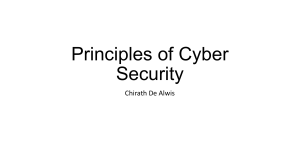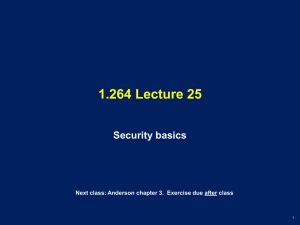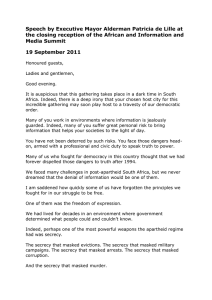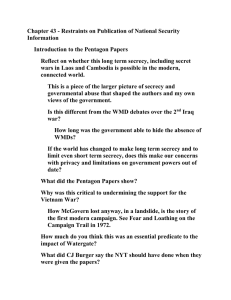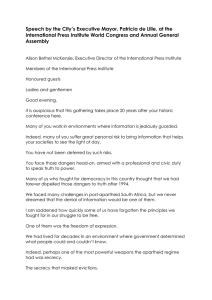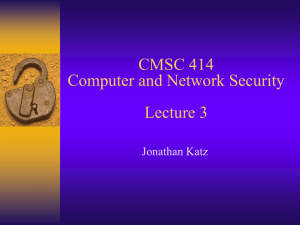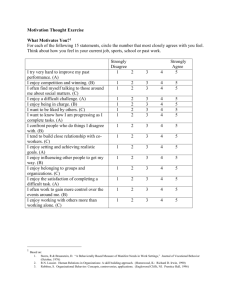Cybersecurity Principles: Bell-LaPadula, Biba, Clarke-Wilson
advertisement
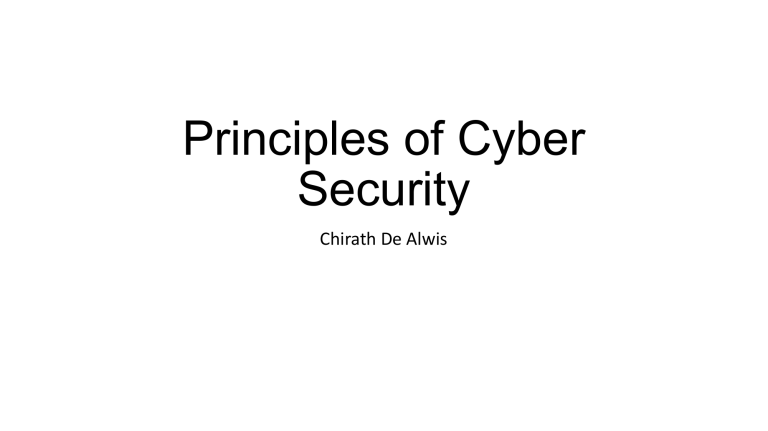
Principles of Cyber Security Chirath De Alwis Classic Security Models • Bell-LaPadula • Biba • Clarke Wilson Security Model Bell-LaPadula Bell-LaPadula • This Model was invented by Scientists David Elliot Bell and Leonard .J. LaPadula.Thus this model is called the Bell-LaPadula Model. • This is used to maintain the Confidentiality of Security. Bell-LaPadula • SIMPLE CONFIDENTIALITY RULE: Simple Confidentiality Rule states that the Subject can only Read the files on the Same Layer of Secrecy and the Lower Layer of Secrecy but not the Upper Layer of Secrecy, due to which we call this rule as NO READ-UP • STAR CONFIDENTIALITY RULE: Star Confidentiality Rule states that the Subject can only Write the files on the Same Layer of Secrecy and the Upper Layer of Secrecy but not the Lower Layer of Secrecy, due to which we call this rule as NO WRITE-DOWN • STRONG STAR CONFIDENTIALITY RULE: Strong Star Confidentiality Rule is highly secured and strongest which states that the Subject can Read and Write the files on the Same Layer of Secrecy only and not the Upper Layer of Secrecy or the Lower Layer of Secrecy, due to which we call this rule as NO READ WRITE UP DOWN Biba Biba • This Model was invented by Scientist Kenneth .J. Biba. Thus this model is called Biba Model. This is used to maintain the Integrity of Security. Here, the classification of Subjects(Users) and Objects(Files) are organized in a nondiscretionary fashion, with respect to different layers of secrecy. This works the exact reverse of the Bell-LaPadula Model. Biba • SIMPLE INTEGRITY RULE: Simple Integrity Rule states that the Subject can only Read the files on the Same Layer of Secrecy and the Upper Layer of Secrecy but not the Lower Layer of Secrecy, due to which we call this rule as NO READ DOWN • STAR INTEGRITY RULE: Star Integrity Rule states that the Subject can only Write the files on the Same Layer of Secrecy and the Lower Layer of Secrecy but not the Upper Layer of Secrecy, due to which we call this rule as NO WRITE-UP • STRONG STAR INTEGRITY RULE Clarke Wilson Security Model Clarke Wilson Security Model • SUBJECT: It is any user who is requesting for Data Items. • CONSTRAINED DATA ITEMS: It cannot be accessed directly by the Subject. These need to be accessed via Clarke Wilson Security Model • UNCONSTRAINED DATA ITEMS: It can be accessed directly by the Subject. Clarke Wilson Security Model • The Components of Clarke Wilson Security Model • TRANSFORMATION PROCESS: Here, the Subject’s request to access the Constrained Data Items is handled by the Transformation process which then converts it into permissions and then forwards it to Integration Verification Process • INTEGRATION VERIFICATION PROCESS: The Integration Verification Process will perform Authentication and Authorization. If that is successful, then the Subject is given access to Constrained Data Items.
